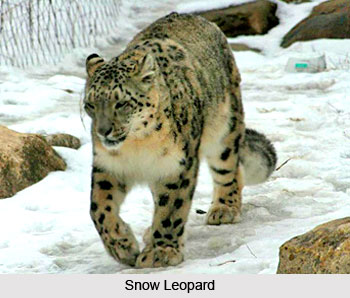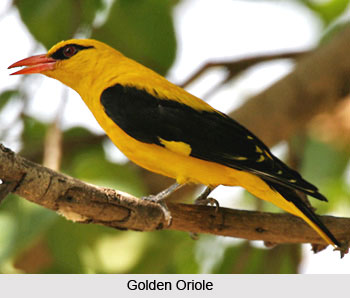 Flora and fauna of Uttarkashi District are diverse and plentiful. The forest cover in the region is around 60 percent to 80 percent, housing a bewildering variety of trees, flowers, wild animals, birds, fish and butterflies. Trees of various kinds are found in different altitudinal ranges, for which they are best adapted. Between 1,000 metres to 2,000 metres, the forest cover is almost exclusively of pine. Pine trees are tapped for resin and their dry leaves used as manure. Between 2,000 metres to 3,000 metres are found forests of deodar, oak and rhododendron.
Flora and fauna of Uttarkashi District are diverse and plentiful. The forest cover in the region is around 60 percent to 80 percent, housing a bewildering variety of trees, flowers, wild animals, birds, fish and butterflies. Trees of various kinds are found in different altitudinal ranges, for which they are best adapted. Between 1,000 metres to 2,000 metres, the forest cover is almost exclusively of pine. Pine trees are tapped for resin and their dry leaves used as manure. Between 2,000 metres to 3,000 metres are found forests of deodar, oak and rhododendron.
Deodar is used for building temples. The wood from oak and rhododendron is utilised for agricultural implements while their leaves serve as cattle fodder. Beyond 3,000 metres, forests of spruce, birch and fir are widespread. The bark of the birch tree (bhojpatra) was used in ancient times for writing manuscript. Between 3,500 metres to 4,500 metres occur the bugyal, with a rich variety of flowering shrubs. The bugyals are especially noted for their wild flowers, which carpet the hill sides for miles on end. Of these, the most beautiful is the rare blue poppy. Often used for religious observances, this large flower is sweet - smelling and found in the higher reaches beyond 3,000 metres. Several medicinal herbs and plants are found at higher altitudes and in the valleys of Uttarkashi District. Near Nelang village, extensive tracts of padam can be found. The powdered wood of this shrub is used for `havan` purposes because of its perfume. In the Dayara range are found atish and Guggul, used in medicine manufacture. The crushed leaves of the Chirata shrub are believed to banish fever in minutes.
 The jungles and forests of Uttarkashi District harbour a rich variety of wildlife. Among the felines found are the snow leopard, leopard, tiger, leopard cat and civet cat. Of the bear family, both Black Bear and Brown Bear are present. Among the antelopes, the most prominent are the bharal, serow, musk deer, barking deer (kakar) and sambhar. The bharal is found at altitudes of around 3500 metres. Among reptiles, a wide variety of snakes are seen, many of whom are worshipped as nag devtas. Another striking specimen is the monitor lizard. A large number of rodents, such as squirrels, marmots and rats, can be observed.
The jungles and forests of Uttarkashi District harbour a rich variety of wildlife. Among the felines found are the snow leopard, leopard, tiger, leopard cat and civet cat. Of the bear family, both Black Bear and Brown Bear are present. Among the antelopes, the most prominent are the bharal, serow, musk deer, barking deer (kakar) and sambhar. The bharal is found at altitudes of around 3500 metres. Among reptiles, a wide variety of snakes are seen, many of whom are worshipped as nag devtas. Another striking specimen is the monitor lizard. A large number of rodents, such as squirrels, marmots and rats, can be observed.
The wide diversity of bird life is distributed according to the altitude of different zones. Among the pheasants found here are the kalij, kokla, chir and monal. The monal with its resplendent plumage of metallic green, glistening purple, startling red and jet black, is a sight to behold. Among partridges, the Himalayan snow cock, kala titar and chakor are frequently sighted. The kala titar or black partridge frequents shrubs near cultivated land.
The non game birds generally sighted are the magpie, thrushes, parakeet, golden oriole, sunbird and robin. The birds found near water courses are the brown dipper and plumbeous redstart. Various swifts, skylarks, swallows, warblers, bulbuls, mynahs and other smaller birds add to the rich bird life of the district.
Fish are plentiful in almost a11 the lakes and rivers of Uttarkashi District, except at high altitudes. Trout in Dodital and carp in Nachiketatal are in abundance. Besides, the mahaseer, kalhana and goonch lurk in the shadowy depths wherever river water collects. Butterflies are generally seen in bugyals and near flowering shrubs. Some of the prominent ones are Peacock Pansy (Golden brown with large spots, it is found in low lying, moist areas), Blue Peacock (Deep black and metallic blue in colour, with red spots, it makes a striking appearance), Tawny Raja, (This species has a dark brown tipped outer wing, with inner zones of light brown colour), Red Lacewing (It is bright brown in colour with a dark brown lace like fringe), Large Silverstripe (It is commonly seen on flowering shrubs, having yellow wings with brown polka dots), Great Orange tip (Its wings are half white and half brown in colour), Red base Jezebel (It is brown with white, yellow and red markings), Yellow Pansy (Found in the lower reaches, it is brown with four large yellow patches), Red Helen (It is reddish brown in colour with one white patch on each wing) and Saturn Moth (This is a beautifully coloured nocturnal creature, found at higher altitudes).



















